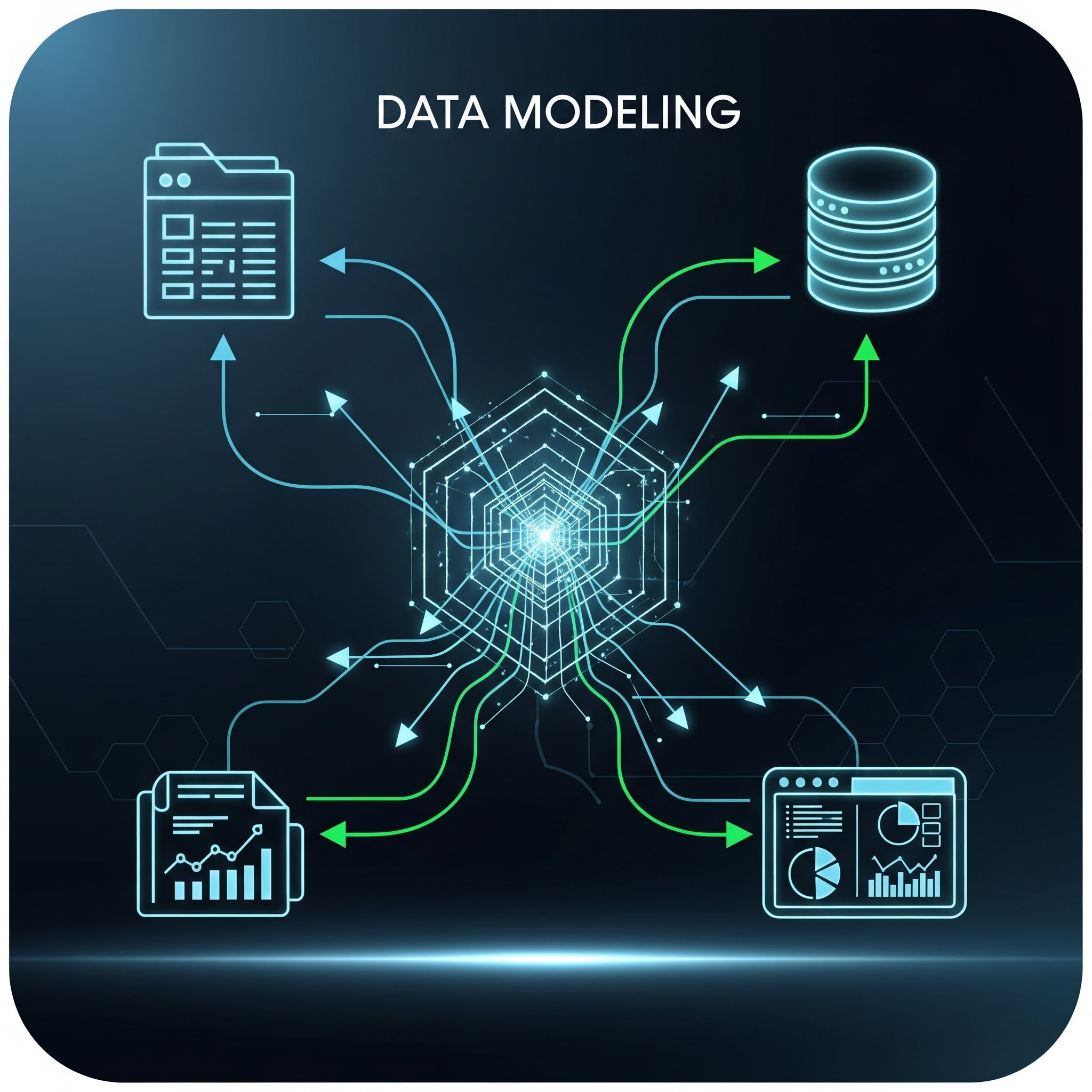Introducing Ellie's AI Assistant to Help You Design Data Products


Over the last year, we’ve been experimenting with Large Language Models and how they could provide our customers a better data modeling experience.
We’ve started this research with a key question.
What are the hardest things to do when it comes to data modeling?
There are many factors, but one thing always stood out — starting from an empty canvas.
Most data modeling journeys start with an empty “Conceptual Data Model” canvas.
It’s when domain experts and data modelers have to figure out what’s important in terms of useful data, and how they relate to each other.
It might sound easy, but it is often the hardest part. Getting people together, getting everyone on the same page, and actively having a conversation.
This comes as no surprise, most domain experts don’t know how to model data and data experts can struggle with jargon and a domain expert’s real-world logic.
But what if there was a way to improve this process?
When experimenting with LLMs, we learned they’re great at suggesting ideas. LLMs take an input, and generate something from it.
It doesn’t have to be perfect but it’s a starting point.
It’s always easier to improve on ‘something’, rather than to start with an empty slate.
Additionally, LLMs have a general understanding of many domains. GenAI can work with a doctor just as well as with a salesperson or a supply chain manager. This enables LLMs to understand jargon and domain-specific explanations.
So we figured, what if we could make a data modeling assistant?
Today, we’re introducing a new set of beta features around AI-assisted modeling that you can test via an Ellie.ai trial account.
With Ellie AI you can draw, write, or have a conversation to create the first version of the model.
Text to model
Upload a text document (pdf, txt, docx), or write a user story, then select the important entities, and Ellie AI will figure out the relationships and build the first version of the model.
We’ve tested a few effective use cases while training the model:
- Use text to model to analyze GDPR documentation and figure out key data points.
- If you have structured documentation from your domain expert, it’s a convenient way to build the first version of the model.
- When you’re building something new, you can ask the AI for suggestions. For example, “Help me build a model for our CRM, suggest the most important entities.”
AI chatbot
Have a conversation with Ellie AI, provide business-specific context, and let our chatbot build the model together with you.
Tips on using the AI Chatbot:
- Always start small. Figure out the four or five core entities and keep iterating through small steps. This helps avoid hallucinations.
- It’s always good to provide as much context as possible to the AI. Not just about the model itself, but also about the modeler.
What is your modeling experience and key domain expertise?
For example: “I’m Jim, head of sales. I’ve never modeled before, but my data team asked me to create a model of our CRM system. Can you help?”
- If you’re not a data modeler, you can use the “Explain the Model” button and our AI will explain the model. You can then have a conversation and figure out if certain data initiatives are possible based on the data model.
- The AI is also great at suggesting improvements to the model. So if you need another opinion, just ask the chatbot to give you suggestions.
- Due to the nature of LLMs, they might start hallucinating. If you ever encounter this, clear chat history and go forward.
Whiteboard plus AI
We’ve built a whiteboard that you can use to draw out and map a business process.
The big difference between us and other such tools is the ability to convert the process into a model. We’re still improving this conversion process.
Tips on Using the Whiteboard:
- Quite often, jumping directly into a data modeling session might be too complicated for domain experts. The whiteboard helps you have these discussions directly in Ellie.
- Currently, the whiteboard elements are interpreted by the AI as business process shapes. So the oval/circle is “start/end”, a rectangle represents a “process”, the arrow explains the flow and so on. We use standard notations for each shape.
- You can convert the drawing to a model with a single click using the ‘Drawing to Model’ button located in the toolbar. Or you can select a part of the canvas by holding the SHIFT key and selecting the elements with a mouse or trackpad.
- When you enter additional context about the model, make sure to clearly explain what the diagram represents. The model name also gives additional context on the data model.
AI is here to assist
AI is great at suggesting ideas and interpreting business context, but it’s not perfect. Always make sure to analyze the models before going forward. They might be 80% accurate but at the end of the day, it is up to the modeler to make the final decision.
These workflows enable anyone in the business to create their version of reality in a way that a data team can understand — the Conceptual Data Model.
Our long-term vision is to enable anyone in your organization to be able to work with data, and we strongly believe that data modeling plays a key role in this.
Request a trial to test these new features.
We can’t wait to get your feedback on Ellie AI. If you have any questions or suggestions, please reach out to stan.dmitriev@ellie.ai.









